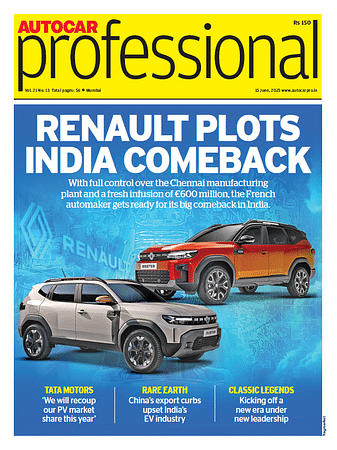Why Time Is the New Currency in India’s Commercial EV Revolution
India’s commercial EV revolution hinges not just on sustainability or innovation, but on time—maximizing uptime, minimizing delays, and ensuring vehicles serve as dependable economic tools for drivers and fleet operators across Bharat.
April sales of electric vehicles have grown 45% YoY, according to figures published on the Vahan portal, and excitement is high that this may well be the beginning of the Year of the EV in India. And even more so, the year of the Indian EV. Here is why.
Conversations around electric mobility are often framed around sustainability and performance, and innovation. And rightly so. But this is also where most conventional EV narratives falter —because India’s commercial EV story is not just about environmental progress or cutting-edge design. It’s about time. Time to complete a delivery. Time to charge. Time off the road. Time lost is income lost.
Uptime is Everything: The Real Driver of EV Adoption
India’s EV adoption isn’t driven by status, style, or sustainability alone—it’s driven by sheer economics. In the commercial segment, the real question is simple: Which vehicle helps me earn more, with fewer interruptions?
For drivers and fleet operators in tier-2 and tier-3 cities—where diesel still dominates and margins are razor thin—every minute matters. A delayed delivery, a missed shift, a breakdown: these aren’t minor inconveniences. They mean lost income. That’s why uptime has become the true differentiator. Not just a metric, but the product. An EV that can’t deliver productive minutes per trip, per day, per driver, simply doesn’t make the cut. Hence, the shift to electric isn’t aspirational—it’s operational. And for that, vehicles must deliver time as value.
Clock-First Design
That is why the next wave of commercial EVs in India must be built around a new principle: clock first design, that prioritizes time efficiency—ensuring commercial EVs are built to maximize operational uptime and align seamlessly with drivers’ work hours. This doesn’t mean reducing innovation; it means recalibrating it. Charging infrastructure, for instance, must cater to unpredictable power cuts and offer high-speed charging options at familiar stops, even the smaller ones. Vehicle software must be tuned not just for diagnostics, but for application of intelligence – predicting issues before they become problems, syncing with a driver’s working hours rather than demanding downtime at odd hours. Even the cabin experience must evolve – not for luxury, but for endurance, comfort, and ease of use during back-to-back runs.
There is a deeper cultural truth here as well. In Bharat, the upwardly mobile driver /fleet owner will expand his/her ‘working’ time to maximize income to be able to provide a better life and future for his/her family. A commercial EV that understands this becomes more than a machine – it becomes a partner. It supports its user not just with battery life, but with emotional assurance that earnability is not just safe but can increase. That a breakdown won’t mean strife at home. That a full charge will cover not just kilometers, but ambitions.
When Vehicles Respect Time, Drivers Trust Them
In Bharat’s commercial EV ecosystem, time is the only metric that matters. Every minute of charging, every breakdown, every delay hits directly at the user’s bottom line. These vehicles aren’t bought for aspiration; they’re chosen for.
It is not a practical or an environmental decision, it is an economic one. And that economy is brutally efficient. If an EV cannot charge quickly at a roadside stall, if it cannot take a beating on uneven roads, or if it cannot be fixed fast by the local mechanic, it is not viable. The EV does not have to be smarter. It has to be faster – to learn, to earn, to recover.
Conclusion
The most untapped opportunity in India’s EV landscape today is not in battery chemistry or aerodynamics – it is in designing for time. For the millions who rely on their vehicles not just for livelihood but for upward mobility, this is the difference between embracing vs sitting-on-the-fence about going electric.
Indian EV makers have understood that (and if they have not yet, they will/ should), while R&D investments towards achievements in range and payload must continue, this is merely window dressing. The commercial EV customer is asking for more palpable economic value than before. In the end, the EVs that win in Bharat won’t just be efficient or electric – they will be ON time.
Vani Rikhy Mehra is VP, Sales and Mobility at Euler Motors. Views expressed are the author's personal.
RELATED ARTICLES
The Growth of the Second-hand/Refurbished Bike Market in India
As rising costs and changing mindsets reshape mobility, India’s used two-wheeler market is gaining momentum—driven by af...
Opinion: How will KTM Change After the Bajaj Takeover?
Now that we know KTM has been saved, the question is what its future identity will be.
Why Leasing Dominates India’s Commercial EV Market
Leasing dominates India's commercial EV sector as fleet operators seek to mitigate high upfront costs, battery uncertain...





 17 Jun 2025
17 Jun 2025
 222 Views
222 Views





 Sarthak Mahajan
Sarthak Mahajan


 Autocar India
Autocar India


